This post will be describing the possibility of regrowing nutritious food sources from nearly nothing, as quickly as possible. Grabbing or finding your quickest growing, most necessary food plants can enable you to grow your own nutritious food in a new place within weeks. This post could be useful to start up a new garden, or to be used if a displaced individual would have some space to grow food.
Background
The garden I tend is 1 mile (1.6 km) from fissure 8, the rapidly growing new Pu’u in Leilani Estates, Hawai’i. This new lava flow started at the beginning of May and is flowing with rapid release showing no intentions of slowing down. I have been unable to tend the garden due to air quality. At this point, I do not know if my edibles are poisoned by the emissions from Kilauea, but when I look at the plants I know they are being negatively affected.
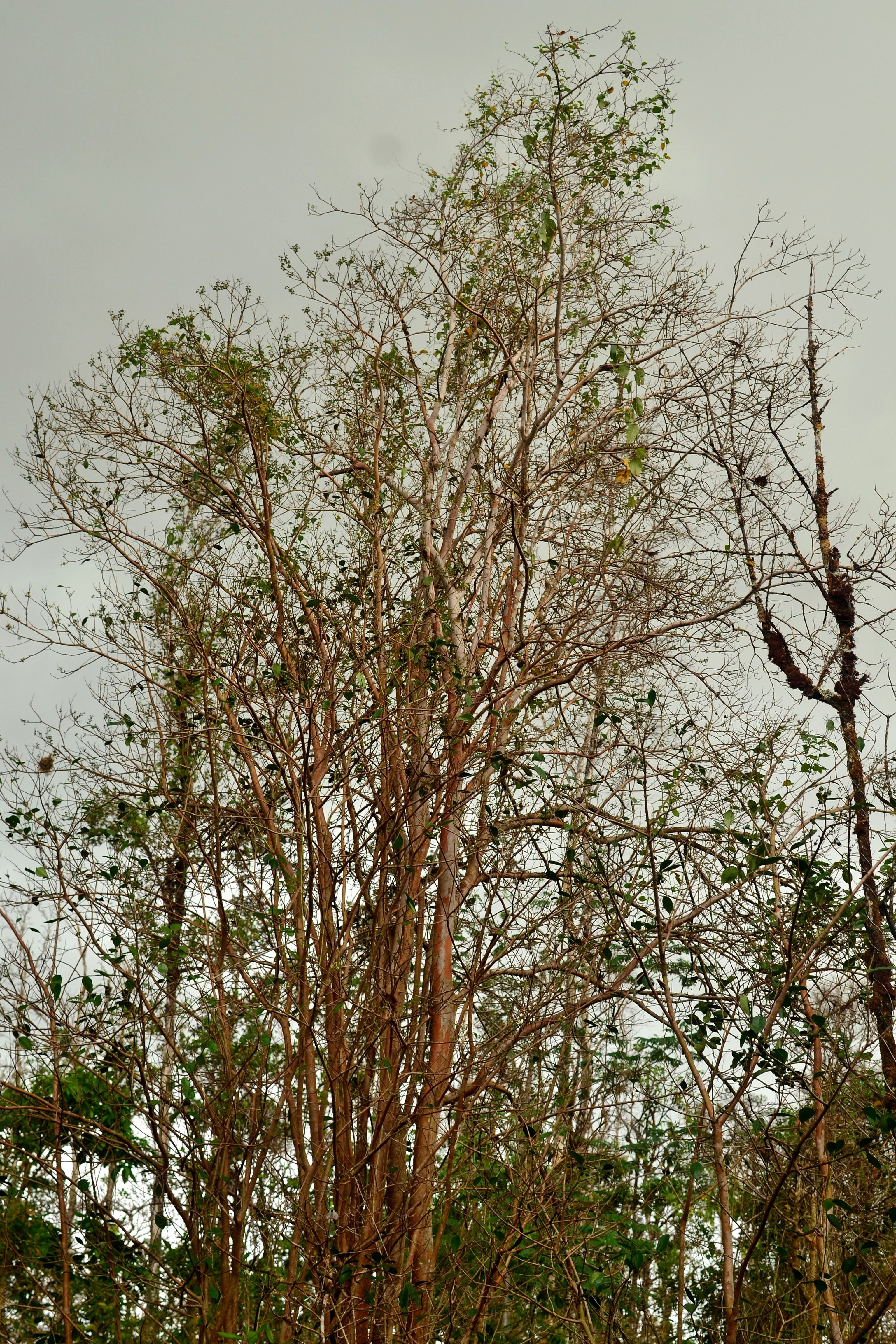
Strawberry Guava. Almost fully defoliated due to emissions. One of our most invasive species.
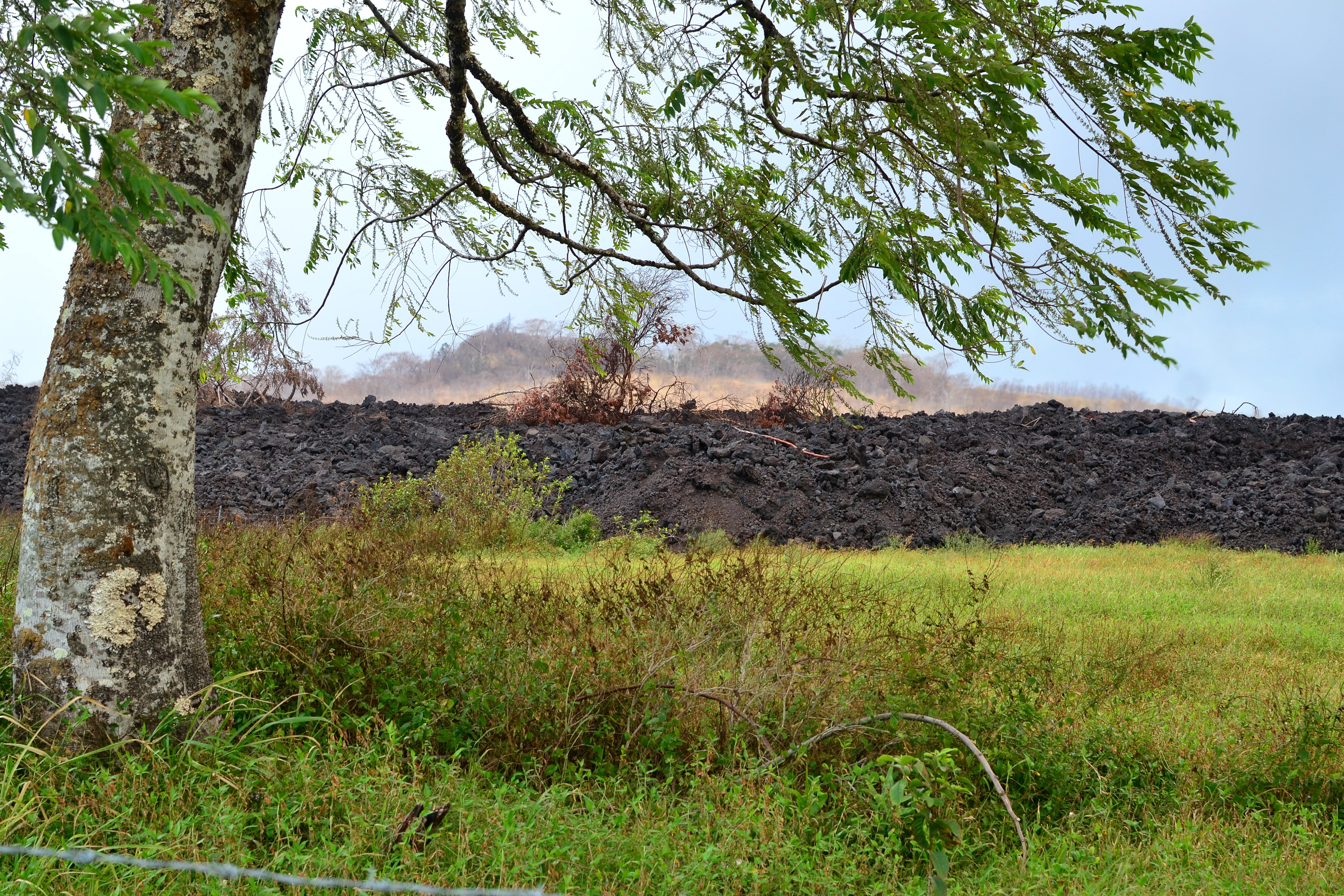
Defoliated invasive Gunpowder Tree, active lava field, dead pasture and forest in background.
The situation
Here in Puna, most people have a bit of land; most people are even willing to grow some food on it. Currently there is a lot of displaced individuals, due to the lava activity, who used to grow their own food. They may be staying at friends houses or staying in shared places. If you are in this position, or a new renter, you will need to ask permission from a landowner to utilize some of their land to grow food. Most reasonable people will understand your desire, and will be willing to allocate a space for you to do so. If the landowner were reluctant you would want to plan out your space to be beautiful and prolific in order to share your abundance with them. The potential problems that could arise in a borrowed space could be: potential lack of cleanliness from a visual perspective and something becoming overgrown and becoming a ‘burden’. The idea is to create a system that will maintain itself after a short period and last there forever in-case a situation like this appears again. Always readily giving garden therapy.
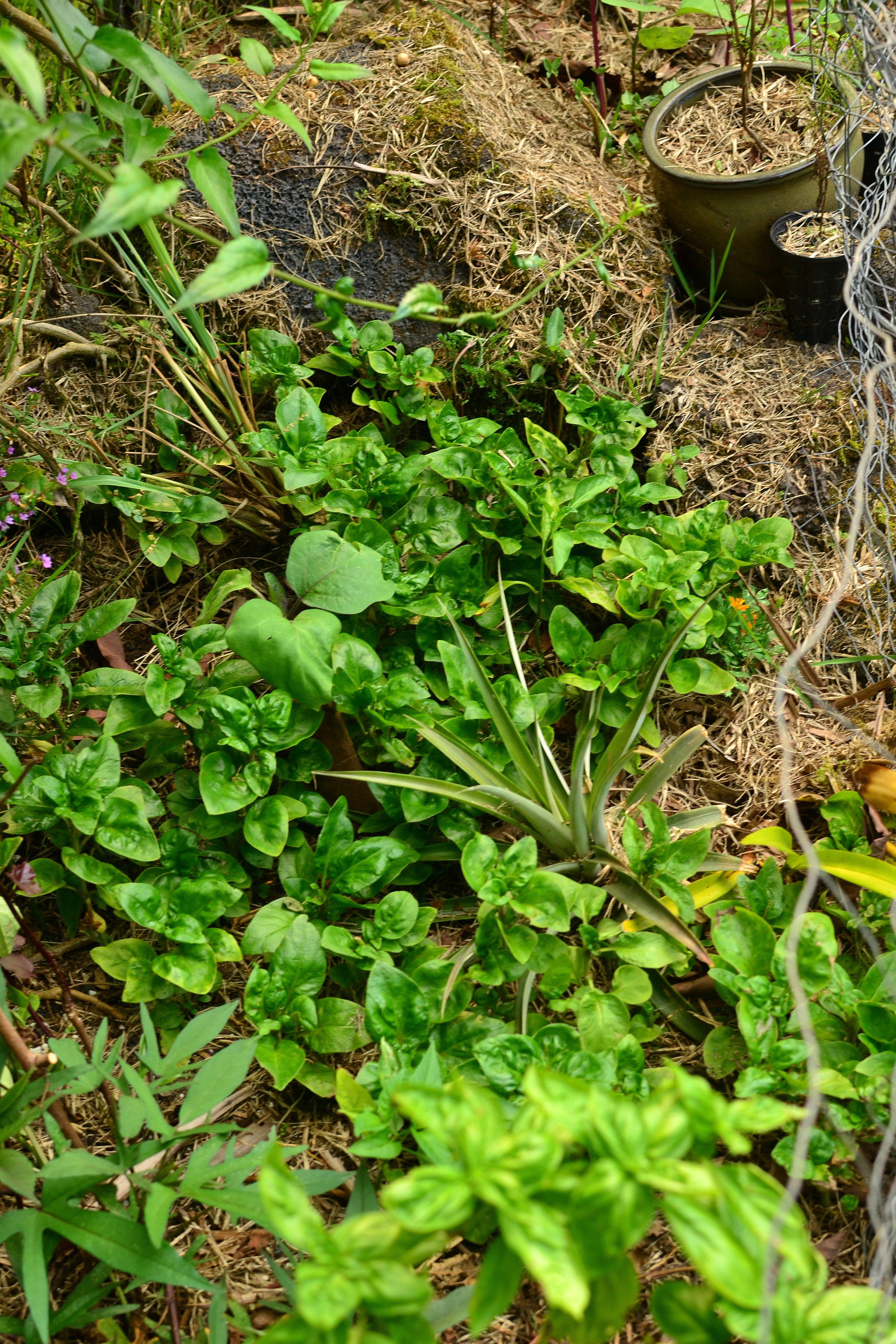
Edible Sweet Potato and Sissoo Spinach 2 weeks after cuttings planted
- Week 2. Portuguese Kale, Eggplant.
- Week 3. Portuguese Kale, Eggplant.
- Week 4. Portuguese Kale, Eggplant.
The Plant List
For a small space these are my necessities: Basils, Comfrey, Cranberry Hibiscus, Culantro, Katuk, Kale, Lemongrass, Mints, Okinawan Spinach, Plectranthus amboinicus, Sissoo Spinach, and Sweet Potato (for leaf harvest). For a larger space include Edible Hibiscus, Moringa, and Taro grown for leaves. For a longer term space include all the plants I’ve previously blogged about.
The Facts
Initial Planting: My new garden space is 350′ elevation and much more dry compared to 780′ and wet in Leilani. The bed is small, 12′ x 2′. All I added to an old garden bed was about a 1/3 of a trashcan full of my previous soil mix: 1/2 potting soil, 1/4 compost and 1/4 biochar/sifted cinder. I planted Basils, Canna, Comfrey, Cranberry Hibiscus, Culantro, Katuk, ko’oko’olau, Lemongrass, Mints, Okinawan Spinach, Sissoo Spinach, Sweet Potato, Taro, Turmeric, and a few annuals I was growing. The annuals were: Portuguese Kale, Bell Peppers (shishito and other), Eggplant, Tomatoes and Tomatillos. Once planted, I heavy mulched it, and then I waited. The chickens came out of nowhere and decided to munch on the veggies, so I added a fence, build it and they will come!
Two weeks into garden: Sissoo spinach and sweet potato leaves ready for harvest. I planted a 2′ x 3′ space with sissoo, and I had enough harvest for three hungry adults. AMAZING!
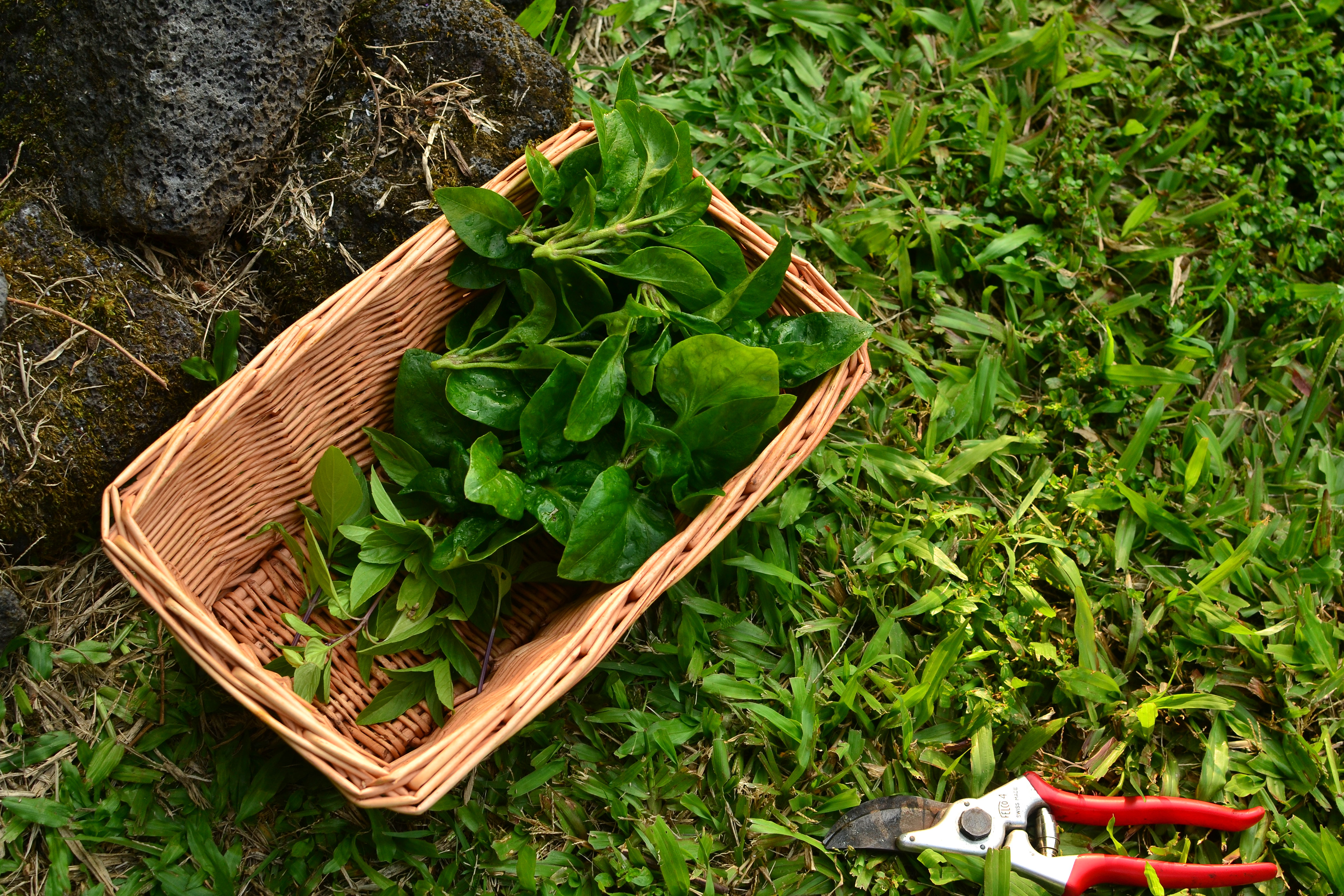
First Harvest. Week 2.
Three weeks in: Sissoo spinach, sweet potato leaves, Portuguese kale, and culantro all have new growth and ready for harvest. Katuk, cranberry hibiscus and okinawan spinach leaves starting to grow rapidly, not yet ready for harvest. We are well on our way in the garden, within a few more weeks all the perennials will be harvest-able and the annuals will start coming on, as they get large enough. This mini-food system is up and going!
Edit: Four weeks: Sissoo spinach, sweet potato leaves, Portuguese kale, culantro, okinawan spinach, and cranberry hibiscus can be harvested. Tomato, tomatillo and bell peppers flowering.
- Pre Planting
- Pre Planting
- Pre Planting
- Pre Planting
- Initial Planting
- Initial Planting
- Initial Planting
- Initial Planting
- Week 2
- Week 2
- Week 3
- Week 3
- Week 3
- Week 4
- Week 4
- Week 4
Look at all that food!! This system is now bustling, and I’m ready to start regular harvests. All it took was 3 weeks!
Final Thoughts
I’ve recently realized the necessity and luxury of growing my own food. I find it hard to find quality produce I can trust. Luckily, I’ve built some relationships with farmers at the farmers markets whom I trust. But buying produce from other vendors is sometimes sketchy. It’s hard to find out where produce comes from, let alone how it was grown. I always prefer local produce even over organic. But you really need ask a vendor you can trust where each product comes from. They will tell you and then you decide if that product is for you. Some other vendors are farms that are certified organic on our island, those vendors are a no brainier to buy from, but I still always ask where the product comes from. Think about it, if you buy a mainland cabbage, it takes at least 3 weeks, by boat, to arrive on our island. Think about how long it took to get from farm to the shipping container. Then being shipped from Oahu to Big Island, SCARY. I feel ok buying highly store-able products; onions, garlic, potatoes, which naturally have a long shelf life, think about plants that can be stored for winter uses. But I do not want to buy short shelf life products like cabbages, leafy greens, tomatoes, or others from mainland. So grow your own food and in the meantime support those local farmers!
- Katku and Sweet Potato. Week 2
- Katuk and Sweet Potato. Week 3
- Katku and Sweet Potato. Week 4
Keep on gardening!
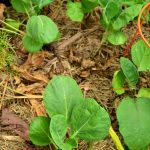
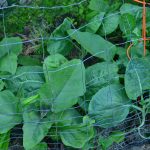
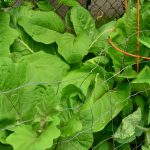
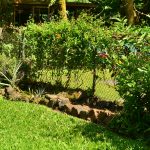
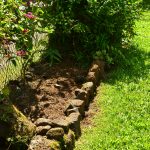
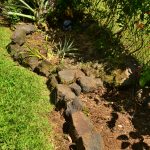
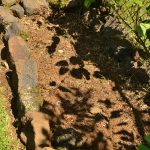
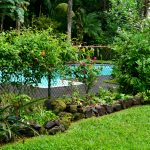
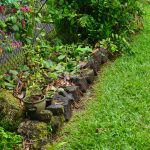
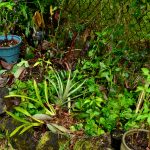
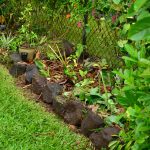
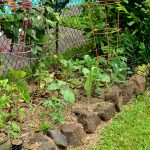
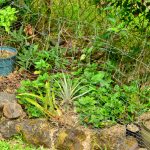
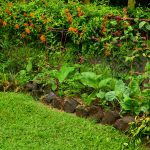
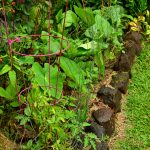
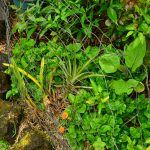
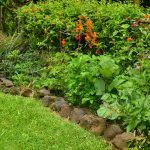
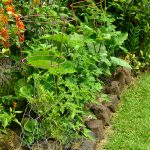
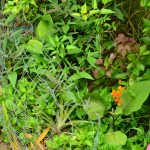
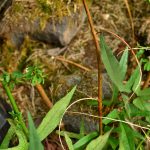
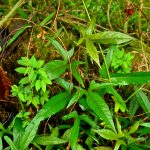
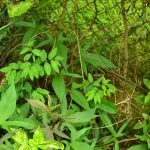
This is so wonderful and inspiring. It has made me have a big think about why I am hesitating to plant, always worried and waiting for the perfect time or seeing the excuses. Thank you and all the best with your new harvest. I’m off to get planting!
I’m glad the post has inspired you! That’s is basically my idea with this blog, inspiration and education!! Check out my post on seed propagation and specifically looking into moon phase planting. That could be the only thing creating hesitation for a planting time, you may as well get the extra benefit of our natural satellite to help our plants grow (and to also boost our garden egos)!
thank you! get your hands in the soil!
I would suggest swapping out Taro, or at least growing in tandem, Xanthosoma sagittifolium or Tannia. Tannia is also known as Arrowleaf Elephant’s Ear or Cocoyam (and many others) and the pacific islands are growing more and more of it due to it being slightly easier in some aspects. Same deal, edible leaves after cooking and good sized tubers for eating within months to a year. You can scrape around the plant looking for surface tubers/cormels if you don’t feel like digging it up.
And also add Kang Kong, Ipomoea aquatica, as a rapid edible for your climate.
ohh yeah. ive read about kang kong. i havent looked too much into it though. im curious how much water it needs or can it be grown in the soil? ive always wanted a pond haha!
amazing! thanks for another plant to add to my searches. wonder if many people are growing that here on big island? ive got xanthosoma brasiliensis growing too but i planted it in april and havent had a chance to try it due to the emissions. maybe i should up-plant it and grow it where i can try the leaves
I’d assume that you will have access to Tannia as a percentage of the documents related to it seem to come out of there. Might be sold under a different name.
Kangkong requires ample moisture, doesn’t need to be a pond. A wet swamp, soil and water in a large tub of some type will get you a lot of greens very quickly, particularly when the weather is warm. It is our Winter here and it dies back to almost nothing which would not happen in your climate-moderate area. You definitely need to add to your list because it grows really fast when it’s going (potential weed in some locales but just prevent it from getting into natural water bodies and it would be fine).
great info. i gotta look into it!
where i live in orchidland we have a lot of mud – heavy, water-logged, anaerobic mud. do you have any suggested uses for mud? maybe as a layer when putting in a new planter bed or maybe in compost? i’d like to use it as a layer in new planter beds, but not sure which layer it should be.
we also have loads of branches and twigs which i have in several piles to decompose. i put a bunch of mud on top of one of the piles as a test to see if it helps/hurts/has no effect.
thank you!
hmm. is it run off from the storms? or was it compacted from heavy machinery work? or do you have clay/boggy soils naturally? if its anaerobic youve got to be careful using it in your beds because it wont have good drainage and therefore could drown your crops or trees. youll want to get something to add drainage into it before you use it around. maybe try to dry it out and then add biochar or cinder to it? leave it as a shallow layer over cement or something to dry it? sounds like a lot of work though. or maybe more useful as the bottom of a pond if thats in your garden plan?
all the soils ive played with here are highly drain-able. so do some experiments as you are but do them on a small scale to see how it goes before you spread it everywhere.
it gathers in low-lying areas around our land, so i guess that would make it runoff. we also remove it from parts of the path that get really muddy. thanks for the advice and i’ll keep experimenting 🙂